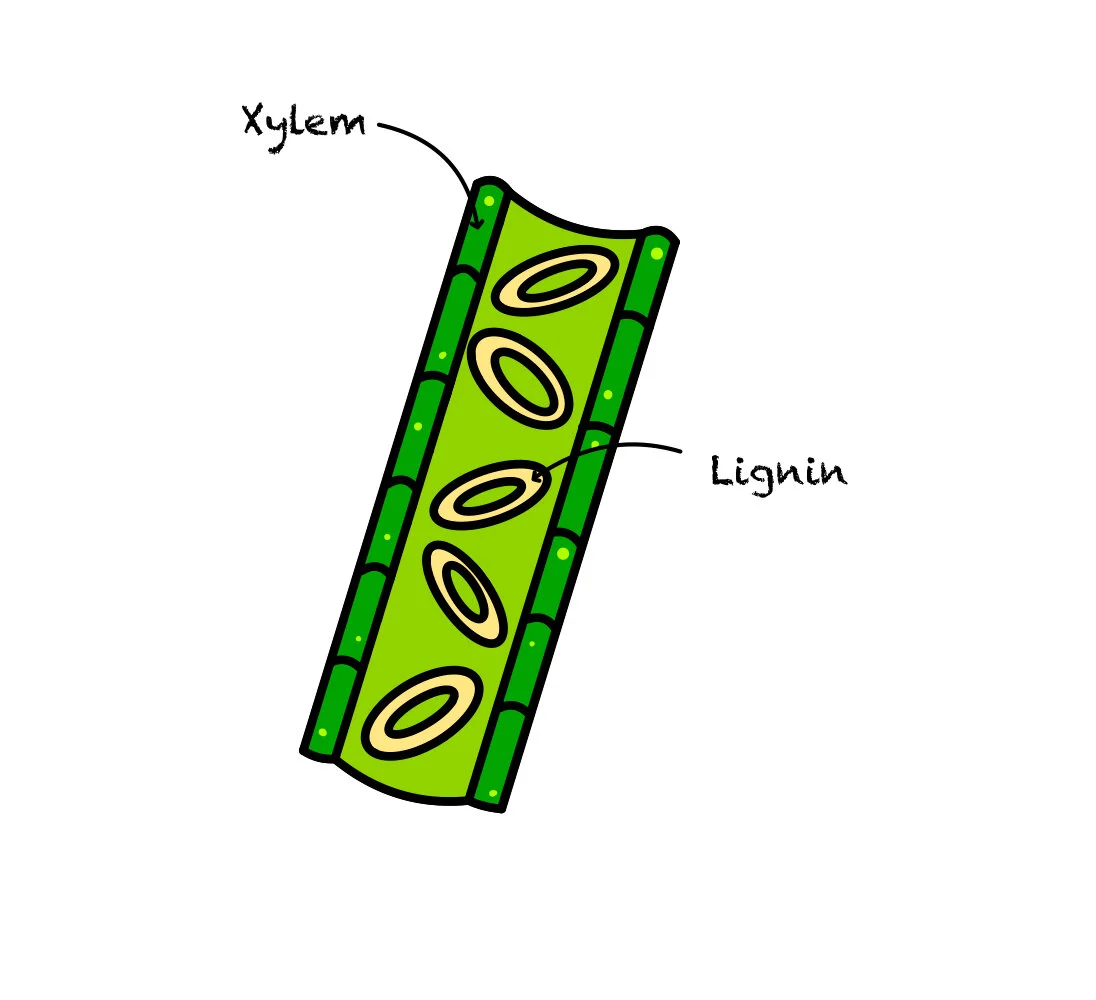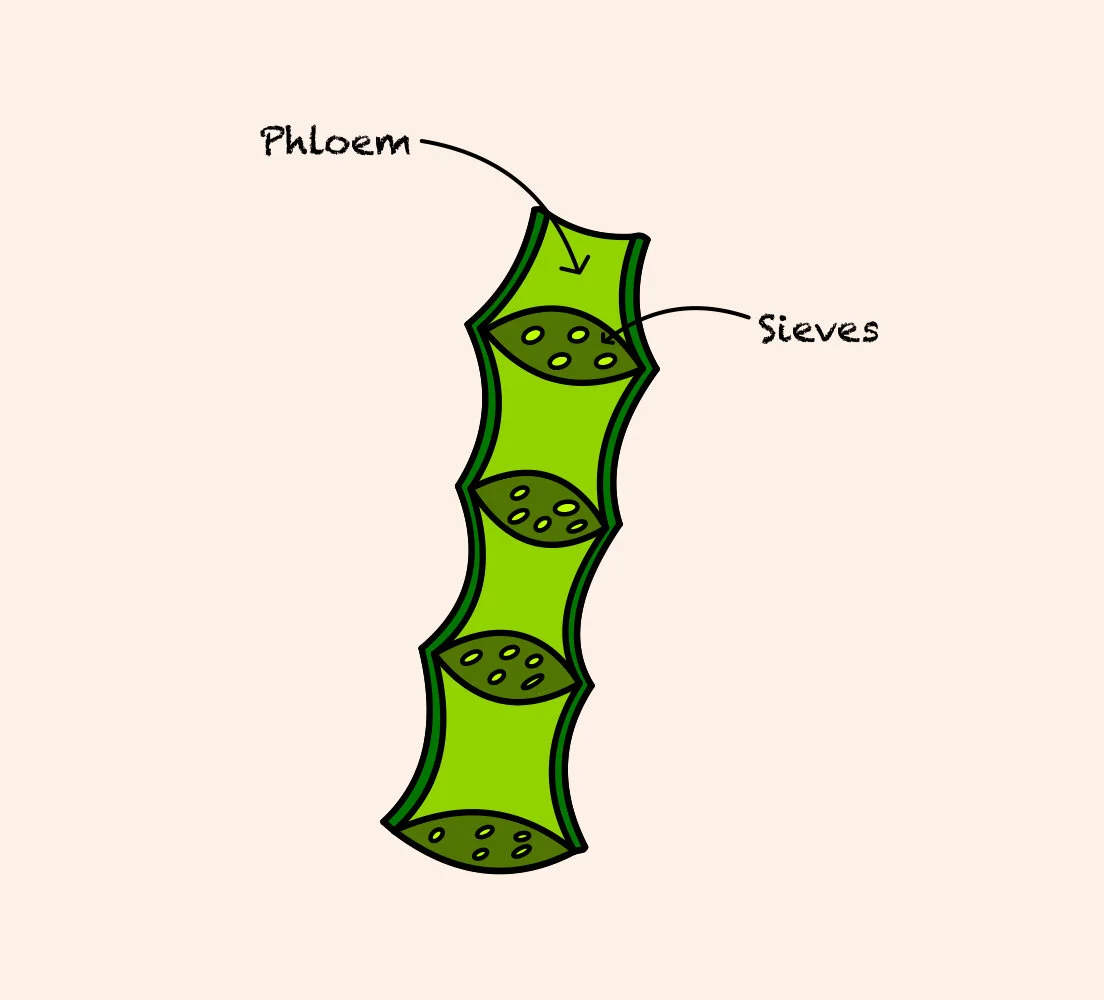Plant Transport Systems
Transporting nutrients is essential for all types of life. To effectively and efficiently transport nutrients, organisms require large surface areas to pass nutrients and waste from one place to another. Large surface areas allow for more diffusion and osmosis to occur.
In this section we will discuss the transport of nutrients and water in plants.
Leaf Structure
Organs of plants include stems, roots and leaves.
Leaves are essential for photosynthesis to occur, as well as to take in water and nutrients.
In National 5 Biology, you are required to know the different structures within the leaf.
As shown in the diagram, this includes the upper epidermis, palisade mesophyll, spongy mesophyll, vein, lower epidermis, guard cells and stomata.
The xylem and phloem lie within the vein.
Water Transportation
Water transportation in plants is performed by the xylem transport system.
These xylem vessels, shown in the diagram, are in charge of transporting water and minerals around the plant.
Water and minerals are transported from root hairs, through root cortex cells, and up through dead xylem vessels.
The walls of these xylem vessels are strong, with thanks to a substance called lignin.
When water travels to the leaf, it can exit through the stomata in the leaf. The stomata is a small gap, which can be opened and closed by guard cells. This gap allows the transfer of water from the leaf to the air.
The loss of water from the leaves of a plant is called transpiration.
Glucose Transportation
Sugar produced by photosynthesis is transported in the phloem system.
The phloem, unlike the xylem, is living tissue.
There are sieve vessels present in the phloem system.
Key Points!
-
Leaf Structure
Transpiration
Transpiration is the transport of sugar in plants.
Sugar produced by photosynthesis is transported in the phloem system.
The phloem, unlike the xylem, is living tissue.
There are sieve vessels present in the phloem system.
-
Xylem System
Water transportation in plants is performed by the xylem transport system.
These xylem vessels, shown in the diagram, are in charge of transporting water and minerals around the plant.
Water and minerals are transported from root hairs, through root cortex cells, and up through dead xylem vessels.
The walls of these xylem vessels are strong, with thanks to a substance called lignin.
When water travels to the leaf, it can exit through the stomata in the leaf. The stomata is a small gap, which can be opened and closed by guard cells. This gap allows the transfer of water from the leaf to the air.
-
Phloem System
Sugar produced by photosynthesis is transported in the phloem system.
The phloem, unlike the xylem, is living tissue.
There are sieve vessels present in the phloem system.



